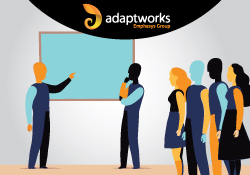There are many flavors of Agile: XP, Scrum, FDD, Kanban, SAFe, LeSS and so on. These are called “agile frameworks”, and each has its own goal: XP is focused on developing a software, Scrum is focused on organizing a team process and SAFe is focused on projects at scale. Although the many and obvious differences between the frameworks (goals AND practices), they all talk the same language: Agile.

The Scrum effect
Scrum is the most didatic and popular framework. It’s easy to use, and yet brings lots of challenges on its use. The Scrum Alliance offers well-marketed and well-accepted certifications to differentiate professionals that are trained in using Scrum to deliver software. So, although I think XP still is the most complete agile framework for a team, many companies are beginning their agile journey through Scrum. Many people think Scrum is synonym of Agile.
Rude awakening
There are many software professionals around the world. Sooner or later, a Scrum-only professional will stumble upon someone that delivers software very well using Kanban, or using only XP. This is really common. And, usually, this is not a kind moment: at this moment, the Scrum professional realizes that there is something much greater than Scrum. This is Agile. And than a new (and huge) journey begins: understanding the hole Agile universe through the study and experimentation of its great variety of frameworks, the discovery of new roles and disciplines and the abstraction of a method.

Increments, short cycles and feedback
This is the essence of Agile. If you or your team deliver software through small increments demonstrated in short periods of time to collect feedback that will influence the software you’re developing (and the process you’re using for it) you’re doing Agile. You don’t even need to name the process you’re using. You’re just delivering software.
Depending on the context you and your team are developing software (a 5 people startup or a 6.000 people huge company) you’ll need totally different sets of tools and processes to deliver small increments of software in short cycles and collect feedback. Here comes the variety of Agile frameworks available for us to use.

Focusing on the Agile fundamentals
The International Consortium of Agile (ICAgile) is offering a set of training and certifications focused on working with Agile, no matter the framework you’re using. The main concern of ICAgile is to teach people the essence of Agile and how to work with it, from gathering requirements to testing a software. It doesn’t offer any kind of framework or process, helping people to understand the mindset behind every existing Agile framework, and making it easier and safer to use/merge the frameworks depending on the problem you’re trying to solve.
Because the ICAgile certification process focuses on teaching people how to deliver software with an Agile mindset, and not on specific mechanics and processes, I truly believe these training tracks, much more than their certifications, can help us guide software professionals through real Agile software development/delivery.


